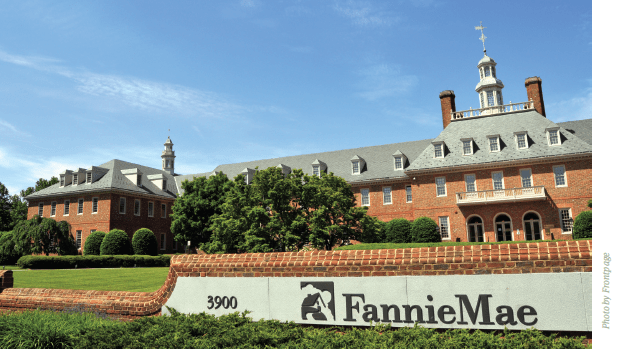The recent level of criticism directed at Fannie Mae and Freddie Mac is probably one thing that shocks me almost on a daily basis at this point. It’s shocking, because it is so, so, so wrong. The dialogue has shifted to shots in the dark, with no back-up assertions with the necessary credibility.
A recent blog on the ongoing reform efforts of Fannie Mae and Freddie Mac is arguing that lending standards should not be loosened in any event. Otherwise, of course, the economy could all come crashing back down again.
The piece in The Guardian, penned by Suzanne McGee, states that sins of the past are reason alone to exercise greater caution when righting the mortgage finance market.
“On the one hand: the Senate Banking Committee finally, narrowly okayed a bill that (if passed as written) would simply replace both Fannie and Freddie with a new entity. It’s a complete restructuring of the mortgage finance infrastructure,” McGee writes. “The goal is to get private entities — instead of the government — to take a greater portion of any losses in any future real estate market meltdown.”
“In theory, that means that future crises won’t destroy the quasi-governmental mortgage agencies like the most recent one did.”
The piece serves as a here’s-how-housing-works narrative with two problems at its core.
First, the role of private players in the mortgage market, which far outstripped Fannie’s and Freddie’s share, is completely disregarded when speaking of the housing boom. Private players drove much of the market's ever-looser standards during the most recent housing runup, something that is often forgotten now in the government-is-everywhere mortgage world, post-crisis.
The second, more technical argument, warps the timeline of Fannie and Freddie conservatorship:
“As long as Fannie and Freddie, with the implied government backing, were present as buyers, it was assumed that nothing could go too terribly wrong. We saw how that turned out.”
Fannie and Freddie, of course, were not in conservatorship before the housing bust, but the above passage wrongfully suggests otherwise.
The more alarming Fannie and Freddie bash work came, perhaps more surprisingly, from the pages of the Economist, author unknown.
The headline sets that stage: Return of the toxic twins.
Fannie and Freddie, it explains, are suddenly “returned.” (But from which precipice, I wonder?) The sub-headline then states that the new FHFA director Mel Watt “wants easier credit for homebuyers. What could go wrong?”
“The maximum size of a Fannie or Freddie-backed loan, rather than shrink, will stay the same: $417,000 in most areas, and $625,250 where housing is pricy.”
How is this policy opening the floodgates to easy credit? The article does not attempt to answer that. But it does mention that while in Congress, FHFA director Mel Watt pressed for easier access to Fannie and Freddie credit for relatively poor families. But now we're supposed to suddenly be sure that not a single success story emerged from this Watt-led policy? That all lending down the credit spectrum is a bad thing?
“He still wants private capital to replace the public sort in the mortgage market, and has told the twins to accelerate the transfer of default risk to private investors,” the article states. Okay — so he actually wants to shrink the GSEs and not return risk making them toxic?
Despite talking out both ends, The Economist does touch on the real, salient point of Fannie and Freddie problems in the market today. And that is quite simply: the mortgage domination of Fannie and Freddie needs to be shattered, not merely chipped away at.
And let's give credit where credit is due — the GSEs have long since showed support for the reduction of their market share. Several CEOs and federal agency directors who have graced the pages of HousingWire magazine, including former acting director of the FHFA Ed DeMarco, agreed to as much in their interviews.
So what’s the rush? Why move now to reduce the GSEs' collective footprint? Well, for one thing, we are facing the temporary solution of conservatorship becoming a fundamental housing finance problem.
BlackRock CEO Laurence Fink said that the housing market is “structurally more unsound ” than prior to the financial crisis due to its reliance on the GSEs of Fannie Mae and Freddie Mac, according to an article in Bloomberg.
This is the problem Fannie and Freddie bashers fail to see; there is a danger of lasting damage in the housing market, the longer we play wait-and-see and the longer we keep the private market at bay.
It’s going to take a huge act of Congress to prevent this. And as we stand, the real problem is that there is no way that’s going to happen, despite anyone’s intentions.






